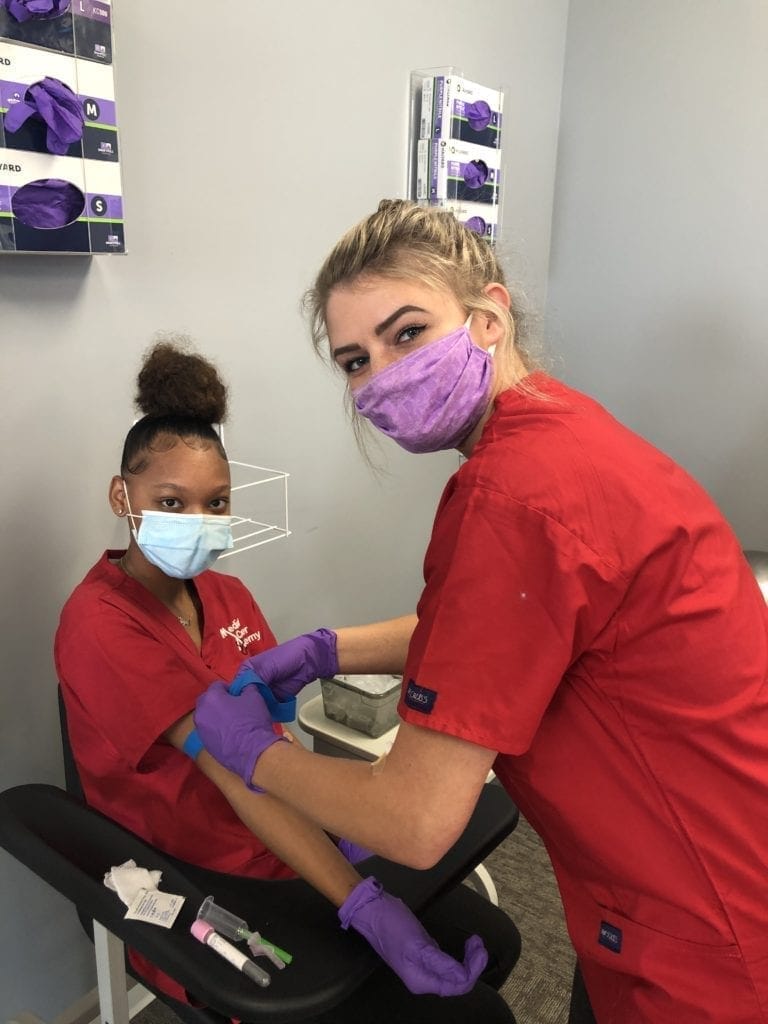Why You Bruise After a Blood Draw and How to Prevent It
There is never a dull moment when you’re a phlebotomist. From screaming children to veins that are hard to hit, drawing blood can be more challenging than during phlebotomy training. All specialists should be prepared to address different concerns among people in their care. For one, patients get bothered when they have bruising around the area of a blood draw, and it’s on phlebotomists to respond to these carefully.
Is it typical for skin to bruise during a blood draw?
Although many people find the bruising from a draw alarming, it’s not serious. When bruising occurs in this case, it’s because a portion of the blood leaks into the surrounding skin when the technician withdraws the needle.
Large-gauge needles or a “difficult stick” are also likely to cause bruising—the latter is when you need to make multiple attempts before collecting the blood successfully. A technician who had undergone proper phlebotomy training will be less likely to make difficult sticks. Note that damage to the blood vessel or lack of applied pressure during the puncture can dislodge the internal clot and cause a bruise to form.
Should I be concerned about bruising from a blood draw?
Usually, the bruising from a blood draw is not a cause for concern, just like the slight pain you experience during a venipuncture. However, it would help if phlebotomists emphasize the importance of applying pressure to the puncture site after the draw.
When people are aware that doing this helps avoid bruising, they will be more mindful of the instructions. Also, technicians should employ other best practices to avoid patient discomfort. Advise patients on what they should do when they experience bruising—avoid lifting with the bruised arm and ice it as soon as possible.
How do I prevent bruising during a donation?
When you expect to donate blood or have an extraction, wear clothes with loose sleeves. Fitted ones can function as a tourniquet, congesting the veins and making it more likely for you to bruise. Also, apply firm pressure to the venipuncture site after the extraction to decrease the chances of a bruise forming. Cover the site with a cotton ball or band-aid and keep it in place for at least six hours.
Avoid heavy lifting after donating blood. If a bruise does form, apply a cold pack on the area to prevent pain or discomfort. Note that you should wait at least 24 hours to take aspirin or ibuprofen. Usually, the bruising disappears in a couple of days. Should the pain become severe, or if the area swells or becomes inflamed, you need to talk to a medical professional at once.
Conclusion
Bruising is common among patients who have to get a blood extraction. Although it is mostly harmless, the sight of a bruise forming around a venipuncture site could be unsettling for many people. Teach patients to prevent this from happening—tell them what to do immediately after the extraction. There’s also no substitute for technique; if the phlebotomist has proper training, it’s unlikely that the puncture would bruise.
Medical professionals who undergo classes at Medical Career Academy will surely have the right technique. We offer phlebotomy training in Indianapolis, as well as in Fort Wayne and Highland, IN. Register today or get in touch with us for more information!

